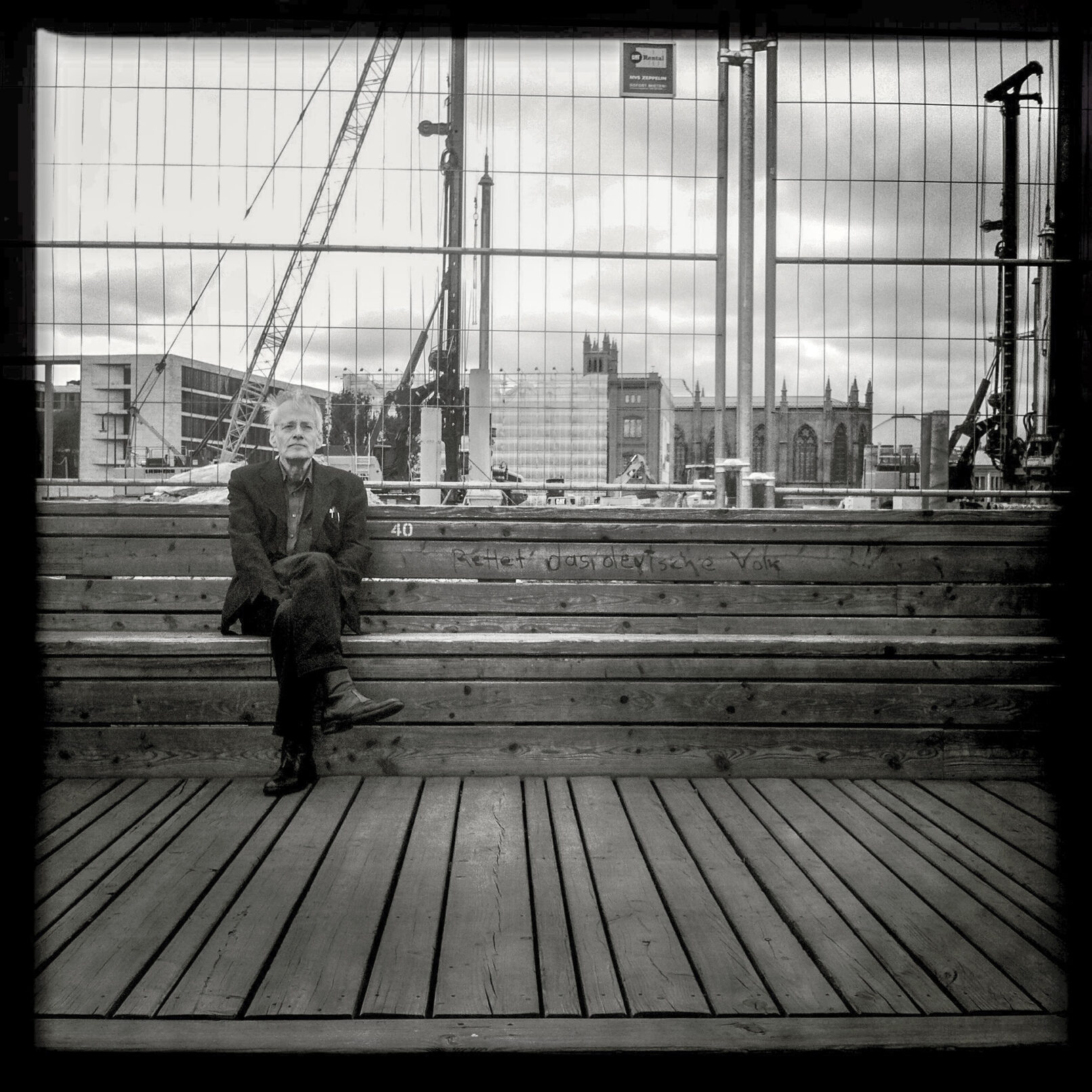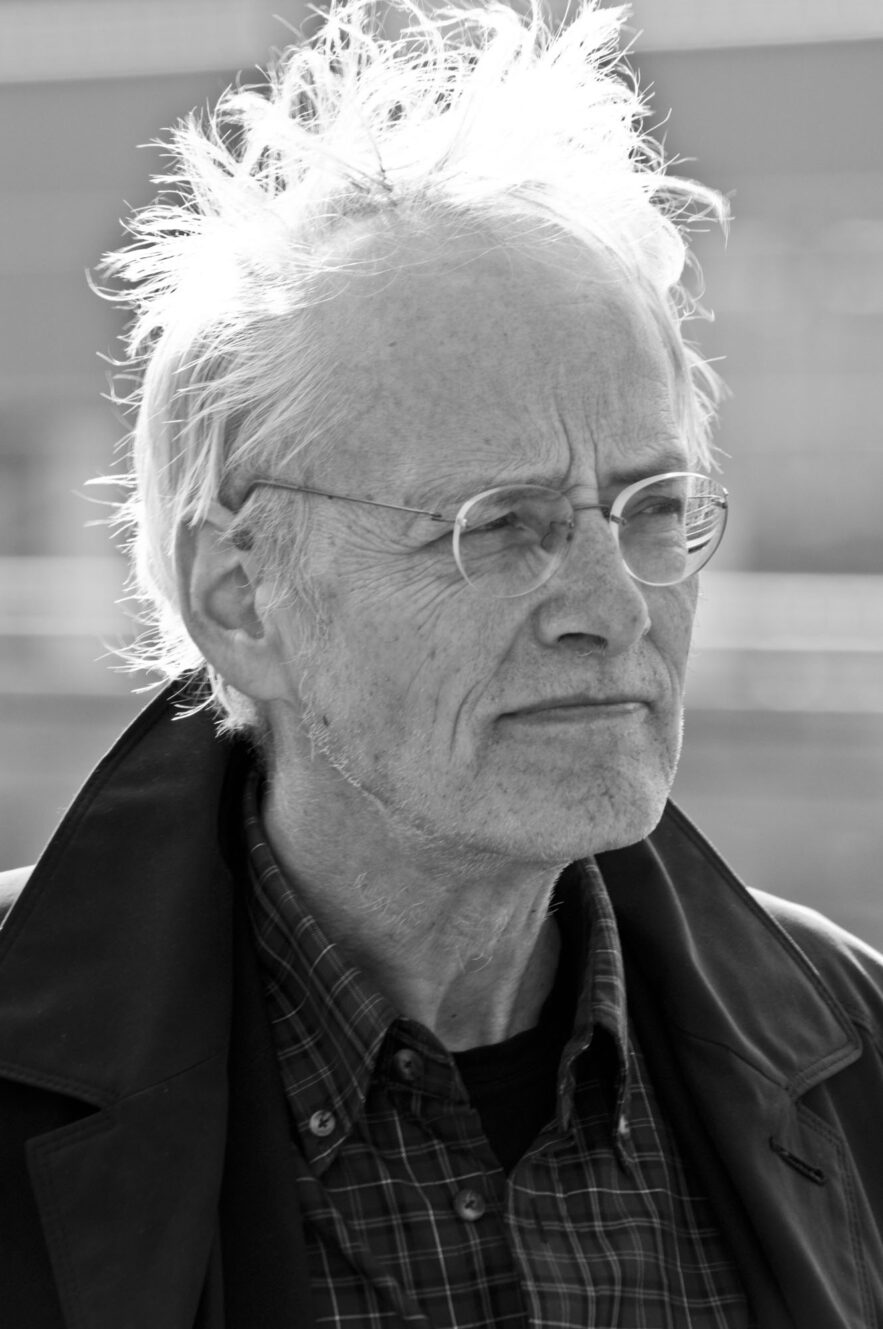TIMM ULRICHS
Einigkeit und Recht und Freiheit / Auferstanden aus Ruinen • TONSPUR 55
EINIGKEIT UND RECHT UND FREIHEIT /
AUFERSTANDEN AUS RUINEN
EIN MUSIKALISCHES WECHSELSPIEL
On historically contaminated ground – the terrain of the destroyed Prussian palace destined for reconstruction, but also of the equally polished “Palace of the Republic” of the equally defunct GDR – and thus, to a certain extent, paying homage to the genius loci, the two once rival-competing German states, the Federal Republic of Germany (FRG) of the three western zones (“Trizonesia”) and the German Democratic Republic (GDR) of the so-called “Eastern Zone”, once again compete in an acoustic-musical contest of systems. “East Zone” once again competed in an acoustic-musical contest of the systems: The audience in the middle of the “TONSPUR” (marked by a red dot), which shows the way for about one hundred metres with 8 loudspeakers, is approached (with a view to the sound sources) from the right by “Das Lied der Deutschen” (Text: Heinrich Hoffmann von Fallersleben, 1841 / Melody: Joseph Haydn’s “Gott erhalte Franz, den Kaiser”, 1796/97), the national anthem of the Weimar Republic and the Nazi Empire from 1922 to 1945 and from 1952 to the present day the “Deutschlandlied” of the FRG; it passes the listener and fades out on the left. From there, describing the same path, the same one-way street, comes the GDR anthem (text: Johannes R. Becher / melody: Hanns Eisler), valid from 1949 to 1990.
These state-supporting symbols, however, do not present themselves in their usual boring, ponderous state, but make speed (100 km/h) by using the famous “Berlin air” as a malleable medium that appears as if viscous and compresses and stretches the melodies according to the “Doppler effect” first described by the Austrian mathematician and physicist Christian Doppler in 1842 (in his treatise “On the coloured light of the double stars and some other heavenly bodies”). The acoustic Doppler effect is generally known from whistling railways and the sirens of police cars and ambulances: when they approach, you hear higher tones than when they move away. It turns out, or rather one hears: depending on the point of view and depending on personal experience and history, the acoustic interplay also becomes an alternating bath of emotions.
Timm Ulrichs, September 2012
“We are the natives of Trizonesia”.
Text, music and song by Karl Berbuer (1948)
Trizonesia” refers to the three western occupation zones of Berlin.
of Berlin. The song was the hit of the year at the time.
BIOGRAPHY
Timm Ulrichs, born 1940 in Berlin, lives and works in Hanover, Münster and Berlin.
wikipedia.org
Opening: Sun 23.09.12, 11.30h
Introductory words:
Georg Weckwerth [Artistic Director TONSPUR].
Timm Ulrichs [Artist]
Fotos Timm Ulrichs, Dokumentation: © Frank Paul
TONSPUR 55
- TIMM ULRICHS [D]
- Einigkeit und Recht und Freiheit / Auferstanden aus Ruinen
- A musical interplay, 2012
- 8-channel installation
- Length endless
- Realisation: Daisuke Ishida & Thomas Wochnikhs
- 24.09.12-10.12.12
- Schloßplatz Berlin/Mitte
- Bench line between Berlin Cathedral and
- Hanns Eisler Academy of Music
- [near the Humboldt Box].
- Daily 08-22h





















